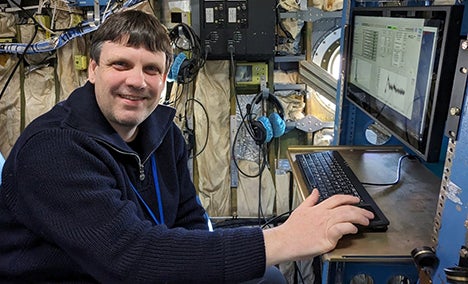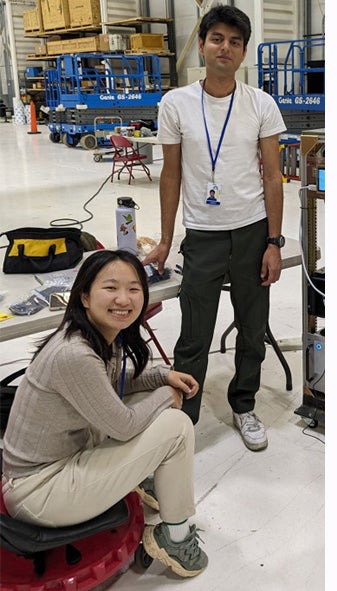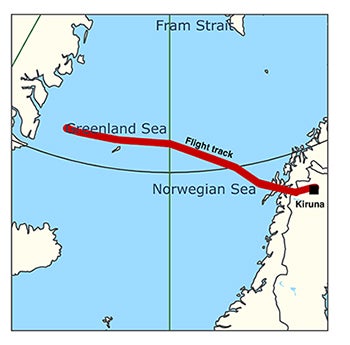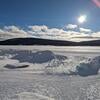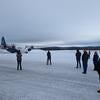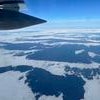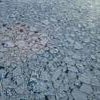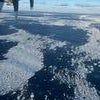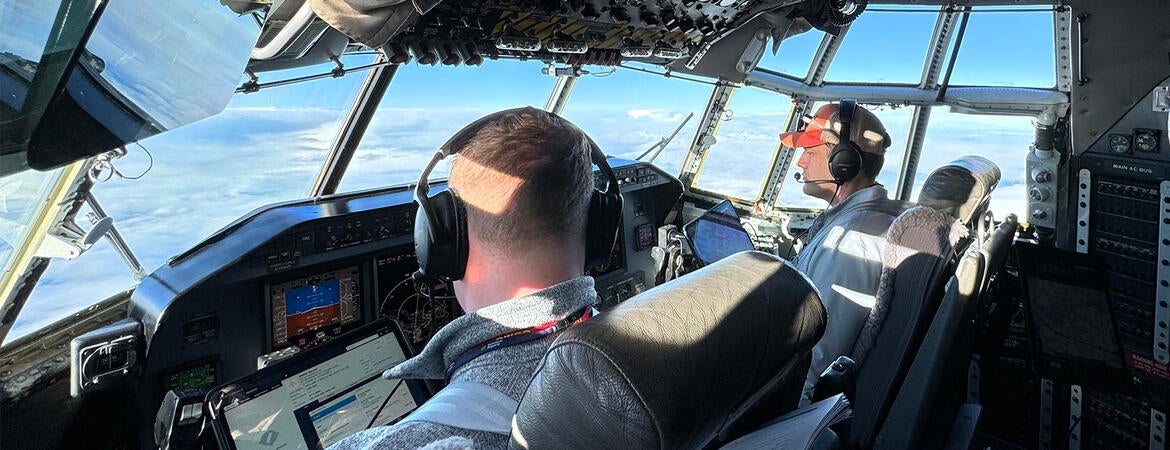
Gathering essential atmospheric data needed to better understand climate change can get cold and turbulent for a UC Riverside professor and two of his graduate students.
UCR Professor Markus Petters and students Sunandan Mahant and Lintong Cai are now spending more than a month with an international research team that’s making bumpy flights from northern Sweden to the Arctic Ocean to collect data from freezing cold air masses that move southward from the North Pole region at this time of year.
Pushed by high-pressure systems, these marine cold air outbreaks, or CAOs, have far-reaching impacts on climate as they suck up moisture and heat from the sea and create heavy snowfall and strong winds, and form shallow convective clouds that take huge volumes of moisture southward.
The research organized by the U.S. National Science Foundation National Center for Atmospheric Research and universities is especially important because temperatures in the Arctic are rising at rates two to four times faster than the remainder of the planet. However, little is known about the region’s influential CAOs because of their remoteness.
The collaboration is bringing together scientists from Stockholm University, University of Oslo, the U.S. Naval Research Laboratory, UC Riverside, and seven other U.S. universities for what they call the Cold Air Outbreak Experiment in the Sub-Arctic Region field campaign, or CAESAR, running from Feb. 22 to April 7.
Based in Kiruna, Sweden’s northernmost town, the researchers are making daily flights in an equipment-laden C-130 military transport plane, going as far west as the ice shelf off Greenland and back to Sweden again with each flight lasting about eight hours.
It helps to have a strong stomach. Turbulence on the aircraft can be so strong that motion sickness among the researchers is commonplace, explained Petters during a Zoom meeting shortly after he arrived in Kiruna.
Nonetheless, the work is exhilarating.
“I have done flights before, but it is the first time I’m doing it with my own instruments,” said Petters, a professor of chemical and environmental engineering in UCR’s Bourns College of Engineering. “And then science-wise, I’m really curious to see what we find. It’s exciting to be this far north and to do this work in an unknown environment.
“Originally, we were planning to fly through the clouds, but that’s uncertain because of some icing issues,” Petters said. “But we definitely want to go below the clouds and see what’s going into the clouds from the sea surface.”
Each university has separate research tasks.
The UCR team is characterizing aerosol (suspended solids and liquid particles) sizes and distributions in these cold air intrusions and gathering data on the particles around which water vapor can condense to form rain droplets in clouds. The team is further gathering data about the concentrations of suspended black carbon particles from forest fires, diesel soot, and other forms of air pollution.
When black carbon reaches the Arctic, its impact on the environment is complex, Petters explained in a blog post from Sweden. Black carbon may influence the formation of clouds by serving as cloud condensation nuclei or ice nucleating particles. Suspended black carbon particles also absorb solar radiation, causing additional warming of the atmosphere. And they eventually deposit on the Arctic ice, causing the surface to absorb solar energy more efficiently, which, in turn, causes ice to melt.
“Combined, these effects contribute to accelerated warming of the Arctic and sea ice loss from a warming climate,” Petters wrote in a research blog.
The C-130 is equipped with dropsondes, which are sensors dropped from aircraft that will provide data about the wind, temperature, and humidity readings as they fall vertically through the atmosphere, allowing scientists to create vertical profiles of atmospheric conditions.
Two lidars (which use laser pulses to measure atmospheric conditions) and two radars will be used on the C-130 to determine the proportions of ice and water as the plane flies above and beneath the clouds by vertically profiling moisture airborne particles as well as determining updrafts and downdrafts.
Instruments on the wings sample cloud properties and air intakes will bring airborne particles, or aerosols, into the cabin for analysis. All of this data will help the team create a comprehensive view of how atmospheric conditions impact cold air outbreaks.
The team chose Kiruna, an iron mining town of about 20,000 people, as its home base because of its proximity to the Arctic Ocean and its facilities.
“Our main criteria was finding an airplane hangar that was large enough for the C-130 and also close enough to the ocean that we wouldn’t spend too much time ferrying over land,” said Cory Wolff, NSF NCAR project manager who is overseeing the operations.
